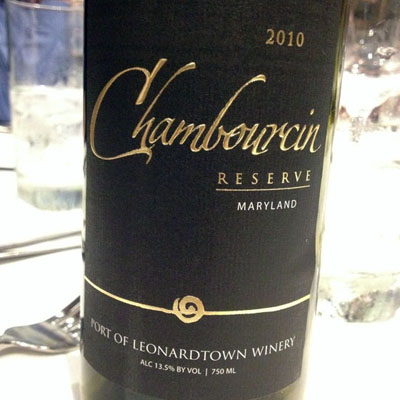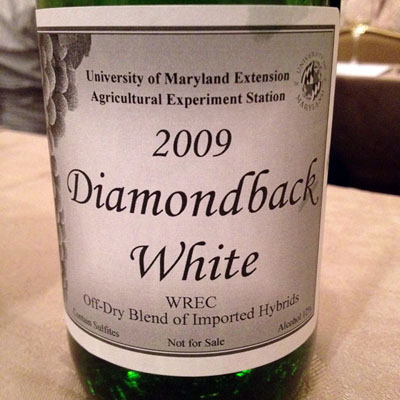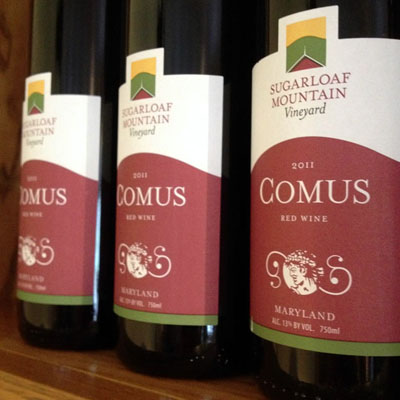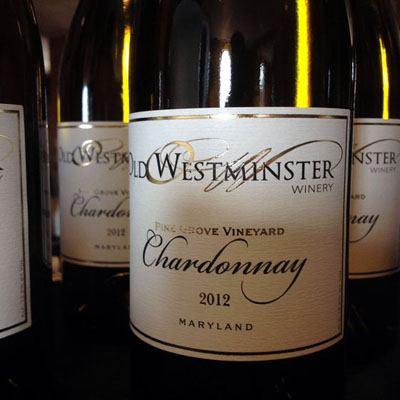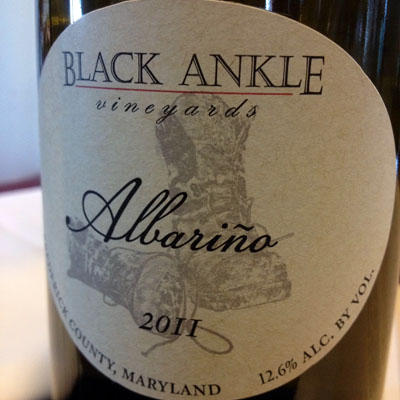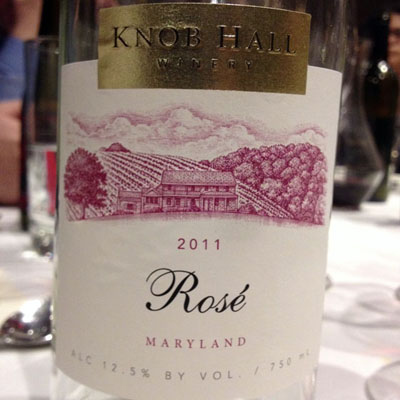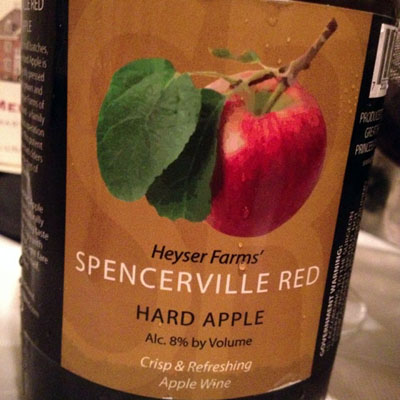Last weekend, I attended the Drink Local Wine 2013 conference in Baltimore, MD to explore Maryland wine — something that I knew next-to-nothing about going into the conference. I’m still not sure that I have a firm grasp on what “Maryland wine” is or could be, but we tasted upwards of 100 Maryland-grown wines, listened to professionals in and around the Maryland wine industry talk about the region’s history, present and future, and welcomed more than 300 locals to a public grand tasting featuring more than 20 wineries.
The event was a lot of fun — but more than that, it was informative and clearly energized local writers and bloggers as well.
I’m not ready to write anything immensely thoughtful or insightful about Maryland wine — that’ll come in a week or so — but (in no particular order) here are the 10 Best Things I Put in My Mouth During Drink Local Wine 2013:
10. Port of Leonardtown Winery 2010 Chambourcin Reserve
Chambourcin — a French-American hybrid — is an important legacy grape in Maryland and while there is a palpable push for vinifera among quality-focused producers, wines like this one show that Chambourcin when grown and made well, can impress.
This wine is actually 80% Chambourcin, 10% cabernet franc, 9% merlot and 1% Norton, and I found it spicy, herbal and a bit rustic with nice ripe fruit and more structure than I’ve ever had from a Chambourcin — probably from the merlot and cab franc.
9. University of Maryland Extension 2009 Diamondback White
One of my favorite parts of the entire conference was tasting six “experiemental” wines grown and made by Dr. Joe Fiola from University of Maryland. While we tasted things like Barbera and Teroldego, this wine was a standout for me. Made with a couple un-named hybrids from Soviet Russia, the crackling natural acidity balanced gentle residual sugar and, as I told Dr. Fiola later, it tasted “Like Traminette, without sucking.” He agreed.
8. Sugarloaf Mountain Vineyard 2011 Comus
Bordeaux varieties are big in Maryland — at least based on what was poured for us — and while there were riper, bigger and oakier wines, I think my favorite of the Bordeaux blends we tasted was also one of the first. The keys here are balance, restraint and integration. Fruit forward but not heavy or jammy, with medium body and a minty edge, this is the kind of red I’d drink every night of the week. I only bought a couple bottles of wine during this trip (I was flying) but this was one of them.
7. Old Westminster Winery 2012 Pine Grove Vineyard Chardonnay
It’s not news that I’m not the biggest fan of American chardonnay. I probably wouldn’t have even tasted this if a fellow attendee who knows that most chardonnay bores me hadn’t suggested that I try it anyway. I’m glad he did. Minerally and focused with just a kiss of oak, it leans to Chablis but doesn’t quite get there — and that’s okay.
I like this enough that I voted for it as the best white wine at the grand tasting. Enough said.
6. Black Ankle Vineyards 2011 Albarino
This might be the cult wine of Maryland. They don’t make a lot. It sells out quickly. And for a price that might make some balk. But this much can’t be argued — it’s delicious. And was sold out, so I couldn’t bring any home.
5. Local Lamb Prepared by Woodberry Kitchen

I didn’t learn a lot about the Baltimore dining scene while I was in town, but I learned one thing — Woodberry Kitchen is a must-visit restaurant for locavores and fine dining lovers alike. Chef Spike Gjerde and his team cooked two local lambs at Black Ankle Vineyards for a media lunch last Friday — grilled chops, fresh sausage and confit belly (yes, confit lamb belly). And while Woodberry’s wine list is only 10-15% local, Gjerde is about as locally focused a chef as I’ve met — to the point that he asked the folks at Black Ankle to start producing verjus so he could stop buying lemons and limes. That’s pretty impressive.
4. Knob Hall Winery 2011 Rose
I love rose. I drink a lot of it year around and I’ll be honest — I was disappointed to only taste two during my visit to Maryland wine country. Most wineries probably don’t want to pour rose for the media, but after a day of tasting every winery’s ‘best’ — read extracted and oaky — reds, this rose hit the spot. My table mates agreed. We asked for more and then procured an open bottle to share in between courses. Rose needn’t be thought provoking. It need only be delicious and this one was. And it retails for $12.
3. Great Shoals Winery Heyser Farms Spencerville Red Apple Wine
I should know what makes this an apple wine verus being hard cider, but I don’t. What I do know is that after each long day of tasting wine, some of this found its way into my glass and I was happy for it. Made using an apple patented by Heyser Farms — and apparently only grown there — the label says it all: “Crisp & Refreshing”
2. Everything from Millstone Cellars
Okay, I’m cheating here just a bit. I tasted three things from Millstone and wanted to mention all three (but only count one). Sue me.
I drink cider on occasion, but I’ve never had any like the two Millstone Cellars ciders I tried — Winesap and Ciderberry. The Winesap is fermented dry, aged in neutral oak barrels and then bottle conditioned with a touch of local tulip honey. Geeky, earthy cider that won’t appeal to everyone, including some cider lovers? Sure, but the folks I was walking around the tasting with all loved it. The Ciderberry cider features the addition of a small bit of raspberry juice, making it a bit fruitier but still tart and refreshing.
The Hopbrosia, pictured here, is a wet-hopped mead (honey wine) and tasted unlike anything I’ve ever tasted before — in a good way.
I was able to track down a bottle of the Winesap to bring home at a shop not far from my hotel. I may need to buy some of the Hopbrosia straight from Millstone.
1. Beer at The Brewer’s Art
I don’t know many people who don’t enjoy a beer or three after a day of wine tasting. So, after the conference officially ended, I headed to The Brewer’s Art — a well-regarded brewpub-meets-bistro in Baltimore. I’m a hop head, but enjoyed the handful of Belgian-style ales that I shared with my end of the table. Intricate and obviously well made, they were outstanding. So was my steak frites.


